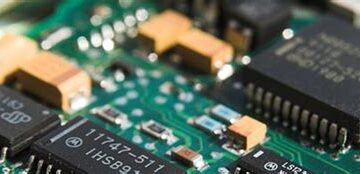Introduction to Semiconductor Capillary Underfill
In the fast-paced world of semiconductor packaging, flip chip technology has emerged as a dominant force, enabling the development of high-performance, compact electronic devices. As the industry continues to push the boundaries of silicon node sizes, the demand for advanced materials that can keep pace with these innovations has never been greater. Henkel, a global leader in adhesive technologies, has recently introduced a groundbreaking semiconductor capillary underfill solution designed specifically for cutting-edge silicon node flip chip applications.
What is Flip Chip Technology?
Flip chip technology is a method of interconnecting semiconductor devices, such as integrated circuit (IC) chips, to substrates or circuit boards. In this process, the IC chip is flipped over, and the active side of the chip faces down onto the substrate. The electrical connection between the chip and the substrate is established through conductive bumps, typically made of solder or gold, that are directly bonded to the chip’s pads.
Compared to traditional wire bonding, flip chip technology offers several advantages:
- Improved electrical performance due to shorter interconnect lengths
- Higher input/output (I/O) density, enabling smaller package sizes
- Better thermal management, as the active side of the chip is closer to the substrate
- Enhanced reliability, thanks to the stronger mechanical connection between the chip and the substrate
The Role of Capillary Underfill in Flip Chip Packaging
While flip chip technology offers numerous benefits, it also presents challenges in terms of reliability and stress management. The coefficient of thermal expansion (CTE) mismatch between the silicon chip and the organic substrate can lead to significant stress on the solder joints during temperature cycling. This stress can cause solder joint fatigue, ultimately leading to device failure.
To mitigate this issue, capillary underfill materials are used to fill the gap between the chip and the substrate, encapsulating the solder joints. Capillary underfill serves several critical functions:
- Redistribution of stress: The underfill material helps to distribute the stress caused by CTE mismatch, reducing the strain on the solder joints.
- Mechanical reinforcement: By encapsulating the solder joints, the underfill provides mechanical support, preventing crack propagation and improving overall package reliability.
- Environmental protection: The underfill acts as a barrier, shielding the solder joints from moisture, contaminants, and other environmental factors that could compromise the device’s integrity.
Henkel’s Advanced Semiconductor Capillary Underfill Solution
Recognizing the increasing demands placed on capillary underfill materials in cutting-edge silicon node flip chip applications, Henkel has developed a state-of-the-art solution that addresses the industry’s most pressing challenges.
Key Features and Benefits
Henkel’s semiconductor capillary underfill offers a range of features and benefits that set it apart from conventional underfill materials:
-
Low-viscosity formulation: The underfill’s low viscosity enables rapid and efficient flow under the chip, ensuring complete coverage of the solder joints and minimizing the risk of voids or incomplete filling.
-
Fast cure kinetics: With its optimized cure profile, Henkel’s underfill can achieve a full cure in a shorter time compared to traditional underfill materials. This accelerated cure rate helps to streamline the manufacturing process and improve throughput.
-
Superior thermal cycling performance: The underfill exhibits excellent thermal cycling reliability, maintaining its mechanical and adhesive properties over a wide temperature range. This enhanced performance translates to improved device reliability and longer product lifetimes.
-
Low moisture absorption: Henkel’s formulation minimizes moisture absorption, reducing the risk of moisture-induced failures such as popcorning or delamination during the assembly process or in the field.
-
Compatibility with various substrate materials: The underfill is designed to be compatible with a range of substrate materials commonly used in flip chip packaging, including organic substrates, ceramics, and silicon interposers.
Application in Cutting-Edge Silicon Nodes
As semiconductor manufacturers continue to push the limits of silicon node sizes, the challenges associated with flip chip packaging become more pronounced. Smaller chip sizes, higher I/O densities, and reduced pitch sizes place increased demands on the underfill material’s performance.
Henkel’s semiconductor capillary underfill is specifically tailored to meet the requirements of these cutting-edge silicon nodes, such as 7nm, 5nm, and beyond. The underfill’s low viscosity and fast-flow characteristics enable efficient filling of the narrow gaps between the chip and the substrate, ensuring reliable protection of the fine-pitch solder joints.
Furthermore, the underfill’s superior thermal cycling performance and low moisture absorption help to maintain package integrity and reliability, even in the face of the increased thermal and mechanical stresses associated with advanced silicon nodes.
Case Studies and Real-World Applications
Henkel’s semiconductor capillary underfill has already been successfully implemented in several real-world applications, demonstrating its effectiveness in enhancing the reliability and performance of cutting-edge flip chip packages.
Case Study 1: High-Performance Computing
In a high-performance computing application, a leading semiconductor manufacturer adopted Henkel’s underfill for their 7nm silicon node flip chip devices. The underfill’s low viscosity and fast cure kinetics enabled efficient manufacturing, while its superior thermal cycling performance ensured the devices’ long-term reliability in the demanding operating conditions of high-performance computing systems.
Case Study 2: 5G Wireless Communication
A major supplier of 5G wireless communication devices incorporated Henkel’s underfill in their 5nm silicon node flip chip packages. The underfill’s compatibility with the organic substrate and its ability to withstand the high-frequency, high-power operating conditions of 5G devices played a crucial role in ensuring the packages’ reliability and performance.
Future Trends and Developments
As the semiconductor industry continues to evolve, the demand for advanced capillary underfill materials that can keep pace with the latest silicon node technologies will only increase. Henkel remains committed to driving innovation in this field, with ongoing research and development efforts focused on several key areas:
-
Ultra-low viscosity formulations: To accommodate the ever-decreasing gap sizes and pitch distances in future silicon nodes, Henkel is working on developing ultra-low viscosity underfill formulations that can efficiently flow and fill these narrow spaces.
-
Faster cure kinetics: Henkel’s R&D teams are exploring new chemistries and cure mechanisms to further reduce the underfill’s cure time, enabling faster manufacturing cycles and improved productivity.
-
Enhanced thermal and mechanical properties: As device operating conditions become more challenging, Henkel is focusing on developing underfill materials with even higher thermal stability, lower CTE, and improved mechanical strength to meet the demands of future applications.
-
Compatibility with advanced substrate materials: Henkel is actively investigating the compatibility of its underfill materials with emerging substrate technologies, such as fan-out wafer-level packaging (FOWLP) and 2.5D/3D packaging, to ensure seamless integration into next-generation packaging solutions.

Frequently Asked Questions (FAQ)
-
Q: What is the primary function of a semiconductor capillary underfill in flip chip packaging?
A: The primary function of a capillary underfill is to redistribute stress, provide mechanical reinforcement, and offer environmental protection to the solder joints in flip chip packages, thereby improving overall device reliability. -
Q: How does Henkel’s semiconductor capillary underfill differ from traditional underfill materials?
A: Henkel’s underfill offers a low-viscosity formulation for rapid flow, fast cure kinetics for improved manufacturing efficiency, superior thermal cycling performance for enhanced reliability, low moisture absorption for reduced failure risk, and compatibility with various substrate materials. -
Q: What are the key benefits of using Henkel’s underfill in cutting-edge silicon node flip chip applications?
A: Henkel’s underfill enables efficient filling of narrow gaps in advanced silicon nodes, ensures reliable protection of fine-pitch solder joints, maintains package integrity under increased thermal and mechanical stresses, and improves overall device reliability and performance. -
Q: Has Henkel’s semiconductor capillary underfill been used in real-world applications?
A: Yes, Henkel’s underfill has been successfully implemented in several real-world applications, including high-performance computing and 5G wireless communication devices, demonstrating its effectiveness in enhancing the reliability and performance of cutting-edge flip chip packages. -
Q: What future trends and developments can we expect from Henkel in the field of semiconductor capillary underfill materials?
A: Henkel is actively working on ultra-low viscosity formulations, faster cure kinetics, enhanced thermal and mechanical properties, and compatibility with advanced substrate materials to meet the evolving demands of future silicon node technologies and packaging solutions.
Conclusion
Henkel’s introduction of its advanced semiconductor capillary underfill for cutting-edge silicon node flip chip applications marks a significant milestone in the development of high-performance, reliable packaging solutions. With its low-viscosity formulation, fast cure kinetics, superior thermal cycling performance, low moisture absorption, and compatibility with various substrate materials, Henkel’s underfill is well-positioned to address the challenges posed by the ever-advancing semiconductor industry.
As demonstrated by its successful implementation in real-world applications, such as high-performance computing and 5G wireless communication devices, Henkel’s underfill is already making a positive impact on the reliability and performance of cutting-edge flip chip packages.
Looking ahead, Henkel’s ongoing commitment to research and development in the field of semiconductor capillary underfill materials ensures that the company will remain at the forefront of innovation, providing the industry with the advanced solutions needed to support the development of next-generation electronic devices.



0 Comments